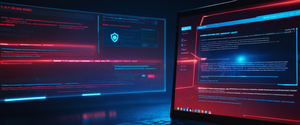
The cybersecurity landscape for Linux systems has undergone a dramatic transformation in recent years, fundamentally challenging the long-held assumption that Linux environments are inherently more secure than their Windows counterparts. What was once considered a relatively safe haven has become a prominent target for sophisticated threat actors, with malware attacks on Linux systems escalating at an alarming rate. In January 2025 alone, leading security researchers identified that the most affected file types were ELF (Executable and Linkable Format) files at 44% of cases, primarily impacting Linux systems and servers, while recent data from the Elastic Security 2023 Global Threat Report revealed that Linux now represents 54% of all malware infections, surpassing Windows for the first time. This fundamental shift in the threat landscape necessitates that system administrators, DevOps engineers, and security professionals develop a comprehensive understanding of Linux malware threats, including ransomware, botnets, cryptominers, and fileless attacks, along with the sophisticated techniques used to deploy and maintain these threats. This report provides administrators with an in-depth analysis of current Linux malware threats, attack methodologies, and protective measures essential for maintaining secure Linux infrastructure in 2025 and beyond.
The Evolution of Linux as a High-Value Target
Understanding the Shift in Threat Landscape
For decades, Linux was perceived as inherently secure due to its open-source nature, strong privilege separation model, and transparency in code review. However, this perception created a dangerous blind spot that attackers have systematically exploited. Linux now powers over 80% of public cloud workloads and 96% of the top million web servers, making it an extraordinarily attractive target for threat actors seeking to compromise critical infrastructure. The convergence of several factors has transformed Linux from a relatively low-risk platform to the primary target for advanced threat actors. First, the explosive growth of cloud computing has placed Linux at the center of enterprise infrastructure, with most cloud instances running Linux variants. Second, the adoption of containerized environments like Kubernetes and Docker has created new attack surfaces that many organizations have not adequately secured. Third, the Linux computing market is projected to grow to $22 billion by 2029, making successful compromises increasingly profitable for attackers.
The motivation for attackers to target Linux systems extends beyond simple financial gain. Linux systems often control critical infrastructure including web servers, databases, DNS systems, and application programming interfaces that are central to modern business operations. When attackers compromise a Linux server, they gain access to sensitive data stored on those systems, can disrupt operations causing significant downtime, and can pivot to other systems within an organization’s network. This access is particularly valuable because Linux systems often run software development infrastructure, allowing attackers to potentially compromise the software supply chain and reach downstream customers. Furthermore, ransomware targeting Linux systems has increased by 75% between 2021 and 2022 compared to the same period in 2021, demonstrating both the growing effectiveness of Linux-targeted attacks and the increasing financial incentives driving their development.
Why Linux Systems Are Attractive Targets
The perception of Linux security actually makes it more vulnerable in certain respects because administrators may not implement the same security measures they would on Windows systems. This false sense of security is compounded by the fact that many Linux systems run in server environments without graphical user interfaces, allowing attackers to establish persistence and maintain control with minimal detection. Additionally, Linux systems are often deployed in resource-constrained environments such as IoT devices, embedded systems, and containers, where traditional antivirus software may not be practical to deploy. Attackers have recognized these deployment patterns and developed malware specifically optimized for these environments. The open-source nature of Linux, while generally a security advantage, also means that detailed documentation of system internals is publicly available to potential attackers, allowing them to develop more sophisticated exploits and evasion techniques.
Taxonomy of Linux Malware Threats
Ransomware Targeting Linux Infrastructure
Ransomware has emerged as one of the most damaging categories of malware targeting Linux systems, with operators specifically developing Linux-native variants rather than simply repurposing Windows malware. Recent high-profile Linux ransomware families include RansomEXX, which targeted the Brazilian government and the Texas Department of Transportation, Tycoon, which first appeared in 2019 targeting software companies and educational institutions, and Pay2Key, which updated its ransomware to specifically target Linux systems. These ransomware variants employ sophisticated techniques that differ from traditional Windows ransomware in important ways. Linux ransomware typically exploits system vulnerabilities or service flaws rather than being delivered through phishing emails as is common with Windows attacks, with some ransomware varieties using vulnerability scanners to identify potential targets.
The attack chain for Linux ransomware involves several distinct phases that system administrators should understand for defensive purposes. Initial compromise typically occurs through exploitation of known vulnerabilities in web-facing applications, SSH brute force attacks, or compromised credentials. Once inside the Linux environment, operators download a hidden ransomware executable and copy it to a local folder before terminating and removing the script, making recovery more difficult. Many Linux ransomware variants can escalate privileges, enabling operators to access restricted system resources and expand the scope of the attack beyond the initially compromised server. The ransomware then establishes persistence through various mechanisms, including modifications to system files, installation of rootkits, and integration with boot processes. The malware communicates with command and control servers to obtain encryption keys, scans the compromised system for sensitive files and cloud storage repositories, and finally executes encryption of target files using symmetric keys generated from public key cryptography.
Botnets and DDoS-Capable Malware
Botnets represent a particularly concerning category of Linux malware because they can be deployed at massive scale across compromised systems to launch distributed denial-of-service attacks or conduct other coordinated malicious activities. The Mirai botnet, first discovered in September 2016, demonstrated the potential scale of Linux-based botnets by compromising hundreds of thousands of IoT devices running Linux to launch devastating DDoS attacks that brought down major internet services. Mirai and its variants scan the internet for IoT devices running Linux, attempt to log in using default credentials, and if successful, download and install the botnet malware. More recent botnets like RapperBot demonstrate evolving sophistication, using brute force attacks against SSH servers configured to accept password authentication rather than targeting legacy Telnet services. RapperBot uses sophisticated SSH 2.0 implementations to brute force systems, downloads credential lists from command and control servers, and establishes persistence through multiple mechanisms including self-propagation via remote binary downloaders.
Novel botnets like PumaBot represent a new generation of threats specifically designed for cloud and containerized environments. PumaBot is a Go-based Linux botnet that retrieves target lists from command and control servers and attempts to brute-force SSH credentials across harvested IP addresses. Upon gaining access, PumaBot establishes persistence using systemd service files, adds SSH keys to authorized_keys files, and executes cryptocurrency mining code. What distinguishes PumaBot and similar emerging botnets is their optimization for cloud environments, their use of legitimate system tools for command execution, and their multi-layered persistence mechanisms designed to survive system reboots and administrator intervention.
Cryptomining and Resource Hijacking Malware
Cryptomining malware has become an increasingly prevalent threat to Linux systems because it generates continuous financial returns with lower detection risk compared to ransomware or data exfiltration. Sophisticated cryptomining campaigns like REF6138 involve multiple malware families working in concert, including KAIJI for DDoS capabilities and RUDEDEVIL for cryptocurrency mining, along with custom-written tools. These campaigns typically establish command and control infrastructure disguised as kernel processes, use Telegram bots for stealthy communication, and leverage cron jobs for scheduled execution. What makes modern cryptomining campaigns particularly dangerous is their sophistication in evading detection through a variety of techniques including SELinux policy modification, creation of bind mounts to obscure malicious files, relocation of system binaries to unusual locations, and process priority manipulation to ensure mining code receives maximum CPU resources.
The emerging Koske cryptomining malware represents the next evolution of this threat category, incorporating AI-assisted development techniques and sophisticated defense evasion mechanisms. Koske conceals its payloads inside benign-looking JPEG files, uses LD_PRELOAD hijacking to hook directory listing functions and conceal malicious artifacts, and employs encryption and obfuscation to evade detection. The sophistication of Koske suggests that adversaries are increasingly leveraging artificial intelligence and machine learning not just to detect and exploit vulnerabilities, but to develop more resilient, harder-to-detect malware. The modular structure of Koske’s code and its adaptive logic suggest automation in development, representing a concerning trend where malware development itself is becoming automated and AI-assisted.
Rootkits and Fileless Malware
Rootkits represent one of the most dangerous categories of Linux malware because they operate at the kernel level, giving attackers ultimate control over the compromised system. Well-designed rootkits are extremely difficult to detect and remove because they hide their tracks by modifying system tools and intercepting system calls that security tools rely upon. The main challenge in detecting rootkits is that administrators cannot trust the kernel and operating system on which the rootkit is installed, making it nearly impossible to identify rootkits by installing detection software directly on the affected operating system. Experienced administrators may attempt to detect rootkits by booting from a live CD to trust the kernel and software running on the Linux CD during investigation, or by using a packet sniffer on an unaffected machine to analyze suspicious network traffic.
Fileless malware represents a particularly sophisticated attack technique that exploits existing trusted software and applications to execute malicious code without writing files to disk. Unlike traditional malware that drops executables and relies on file-based signatures for detection, fileless malware operates entirely in memory, leaving no artifacts on the hard drive after system reboots. Fileless attacks targeting Linux systems typically begin with exploitation of a vulnerability such as a misconfigured Docker instance or exposed API, then modify a running Linux process using the ptrace() system call to insert malicious code directly into memory. The injected code then leverages built-in interpreters such as Python, Perl, or PHP to execute malicious commands, often placing code in /dev/shm or /run/shm directories where it can be executed directly from RAM. This attack methodology is particularly effective because it evades traditional endpoint detection and response tools, antivirus software, and behavior-based defenses that rely on detecting file creation or modification.
Attack Vectors and Exploitation Techniques
Web-Based Attack Vectors and Cloud Vulnerabilities
The overwhelming majority of attacks targeting Linux systems are web-based, with research from Trend Micro indicating that 97% of attacks on Linux systems exploit web vulnerabilities. These web-based attacks typically target public-facing applications, APIs, and services exposed to the internet. SQL injection, cross-site scripting, server-side request forgeries, and other common web vulnerabilities serve as initial entry points for attackers to compromise Linux systems. The prevalence of web-based attacks reflects the fact that most Linux systems serve as web servers, application servers, or other services accessible over the internet, creating numerous opportunities for attackers to identify vulnerable applications and systems.
Cloud-based Linux deployments face unique vulnerabilities related to misconfiguration and insufficient security controls. Research indicates that misconfigurations in cloud environments represent a critical attack surface, with threat actors specifically tailoring ransomware to exploit cloud misconfigurations, weak permissions, and CI/CD pipelines. Kubernetes clusters and containerized environments are particularly vulnerable because they offer rapid lateral movement once initial access is gained, allowing attackers to compromise multiple containers and potentially the underlying host. Cloud environments often prioritize speed and operability over security, with default configurations being open and unrestricted, leaving organizations susceptible to attacks. ELF-based malware families specifically designed for cloud environments, such as NoodleRAT, Winnti, and SSHdInjector, demonstrate sophisticated techniques including dynamic linker hijacking using LD_PRELOAD environment variables to inject malicious code into legitimate processes and hook critical Linux services like SSH daemons.

SSH Attacks and Credential Compromise
SSH (Secure Shell) represents both a critical service for remote administration of Linux systems and a significant attack vector when not properly secured. Attackers employ multiple techniques to compromise SSH systems including brute force attacks against weak passwords, exploitation of SSH service vulnerabilities, and compromise of SSH private keys. The prevalence of SSH as an attack vector is reflected in the design of botnets like RapperBot, which exclusively targets SSH servers rather than legacy Telnet services, and PumaBot, which brute-forces SSH credentials across harvested IP addresses. Default SSH configurations often accept password-based authentication and weak passwords remain alarmingly common in many organizations, making SSH brute force attacks highly effective at scale.
Recent sophistication in SSH-based attacks includes the development of SSH backdoors that inject malicious code directly into the SSH daemon at runtime, allowing attackers to establish persistent access without leaving obvious traces in system binaries. SSHdInjector, observed in use by Chinese-nexus threat actors, injects malicious code into sshd at runtime to grant persistent access, facilitate credential theft, enable remote command execution, and allow data exfiltration. The advantage of this technique is that legitimate SSH binaries remain unmodified, making detection more difficult for administrators who might use file integrity monitoring on system binaries.
Supply Chain Attacks and Dependency Compromise
Supply chain attacks represent a particularly insidious threat to Linux environments because they target upstream dependencies and software components rather than directly attacking systems. The XZ Utils compromise discovered in March 2024 demonstrated the potential impact of supply chain attacks when a malicious maintainer contributed code to a critical upstream dependency that was incorporated into multiple Linux distributions. The attack added a backdoor to liblzma that allowed attackers to bypass SSH authentication protocols, potentially affecting millions of Linux systems across multiple Linux distributions. This attack highlighted the complexity of Linux software supply chains where independent open-source projects developed and maintained by distributed communities are integrated into distributions and then deployed to end systems.
Supply chain attacks are particularly effective against Linux environments because distributions rely heavily on open-source components, many of which are maintained by small teams or individual developers with limited security resources. Attackers have demonstrated the capability to systematically infiltrate less secure assets in the software supply chain, including software dependencies, firmware, and service providers, allowing them to introduce malicious code that propagates throughout entire ecosystems. Research has identified vulnerabilities in the software infrastructure used by Linux distributions, including the Pagure Git forge used by Fedora and the Open Build Service used by openSUSE, which could have allowed compromise of all packages distributed by those distributions.
Malware Detection Challenges and Limitations
Limitations of Traditional Security Approaches
Traditional antivirus and signature-based detection systems face significant challenges when defending against modern Linux malware. Fileless malware by its nature leaves no artifacts on disk that signature-based antivirus tools can detect, rendering traditional antivirus ineffective against these threats. Rootkits deliberately manipulate system tools and kernel data structures to hide their presence and prevent detection by tools running on the compromised system, requiring administrators to boot from external media or use network-based monitoring to detect them. Many Linux systems operate in environments where deploying traditional antivirus is impractical or impossible, including containerized environments, IoT devices, and embedded systems running stripped-down Linux variants.
The sophisticated evasion techniques employed by modern Linux malware further reduce the effectiveness of traditional security tools. Malware authors employ obfuscation, encryption, and polymorphic techniques to avoid triggering signature-based detections. The use of legitimate system tools and interpreters to execute malicious code, known as “living off the land” techniques, makes it difficult to distinguish legitimate system activity from malicious activity. Behavioral-based detection systems may struggle with these techniques if they don’t have comprehensive understanding of normal system behavior in diverse Linux environments, where normal activity can vary widely depending on the system’s purpose and configuration.
The Challenge of Detecting Advanced Persistent Threats
Advanced persistent threats targeting Linux systems demonstrate sophisticated capabilities for evading detection and maintaining long-term access. These threats often employ multiple layers of obfuscation, use dead drop systems to retrieve commands and payloads, and maintain multiple backup command and control channels to ensure continued access even if one channel is disrupted. The APT36 campaign targeting Indian BOSS Linux systems demonstrated the ability to rapidly customize malware delivery mechanisms according to the victim’s operating environment, using weaponized .desktop shortcut files that masquerade as legitimate documents. The ability of sophisticated threat actors to develop operating-system-specific variants suggests that generic, one-size-fits-all security solutions will prove insufficient against advanced threats.
Comprehensive Malware Protection Strategies
System Hardening and Prevention
System hardening represents the foundational layer of defense against Linux malware, reducing the attack surface by limiting the number of potential entry points and vulnerabilities that attackers can exploit. Hardening practices include disabling unnecessary services, removing unneeded software packages, closing unused network ports, and applying the principle of least privilege to user accounts and services. Strong authentication mechanisms including SSH key pairs rather than password-based authentication, multi-factor authentication, and enforcement of strong password policies significantly reduce the effectiveness of brute force attacks and credential-based compromises. Administrators should disable root login on systems, create dedicated administrative accounts with limited sudo privileges, and regularly audit access controls to ensure that only necessary accounts have elevated permissions.
Mandatory access control systems like Security-Enhanced Linux (SELinux) or AppArmor provide fine-grained control over what processes can access on the system, restricting access to resources based on security labels or profiles rather than relying solely on traditional file permissions. SELinux offers more granular, label-based control for enhanced security ideal for enterprise environments, while AppArmor provides a simpler, path-based approach that is easier to manage. Both systems significantly limit the damage that compromised processes can cause by restricting their access to the minimum required resources. Linux Kernel Runtime Guard (LKRG) provides runtime integrity checking of the Linux kernel to detect security vulnerability exploits against the kernel, protecting against exploits gaining unauthorized root access and LKM rootkits.
Patch Management and Vulnerability Management
Regular patching and timely application of security updates represent one of the most critical and effective defenses against Linux malware. Many successful exploits target known vulnerabilities that have patches available but have not been applied to systems. Linux patch management involves systematically identifying, testing, and applying security patches and updates to all Linux systems in an organization. Organizations should create comprehensive patch management policies that include quality assurance testing, frequency of patching, rollback procedures, and authorization processes. Vulnerability scanning tools should be used to identify missing patches on all systems, allowing administrators to prioritize patching based on vulnerability severity and system criticality.
Live patching technologies like KernelCare allow organizations to apply security patches to the Linux kernel without requiring system reboots, which is particularly important for systems that cannot tolerate downtime. However, live patching should not replace regular patching schedules, as some updates require reboots to take full effect. Organizations should maintain current inventory of all systems and regularly review vendor patch announcements to stay informed about critical vulnerabilities affecting their deployed systems.
Malware Detection and Scanning Tools
Deploying malware detection tools and conducting regular malware scans represent important components of a comprehensive defense strategy. Linux Malware Detect (LMD) is a free and open-source malware scanner designed to create signatures of malware actively being used in attacks. LMD actively updates its database with latest malware signatures and provides broad coverage for a wide range of malware types. ClamAV is an open-source antivirus engine that can detect trojans, viruses, backdoors, and other related threats, offering flexible and scalable scanning capabilities. Rootkit Hunter and chkrootkit are specialized tools designed to search for traces of rootkits, backdoors, and other malicious components on Linux systems.
These tools should be deployed to scan systems regularly, including full system scans and targeted scans of high-risk directories like /tmp and /dev/shm where malware often hides. Scanning should be integrated into change management processes and performed on systems when suspicious activity is detected. However, administrators should recognize that no malware scanner will detect 100% of threats, and layered security approaches are essential to detect and respond to threats that evade signature-based detection.
Endpoint Detection and Response for Linux
Endpoint Detection and Response (EDR) solutions have increasingly become essential for defending Linux environments against sophisticated threats. Solutions like Uptycs, recognized as the #1 Linux EDR provider, deliver comprehensive telemetry coverage including process activity, file manipulation, user activity, network activity, and system modifications. Modern Linux EDR solutions collect and process extensive real-time telemetry data with minimal performance impact through lightweight agents, enabling high-fidelity threat detection. These solutions align with the MITRE ATT&CK framework to detect attacker behaviors, employ file integrity monitoring and behavior-based detection to identify suspicious activities, and provide cross-platform detection across cloud infrastructure, Kubernetes environments, and other sources.
Red Canary Linux EDR specifically addresses unique threats and characteristics of Linux systems with file modification (filemod) telemetry tracking file creation, deletion, renaming, and editing to detect malicious activities. Comprehensive visibility monitoring processes, network connections, DNS queries, and user activity across various Linux distributions and containerized applications allows security teams to detect and respond to threats quickly. EDR solutions should be integrated with Security Information and Event Management (SIEM) systems to correlate events across the entire infrastructure and identify patterns indicative of multi-stage attacks or lateral movement.

Incident Response and Forensics
Linux Log Analysis and Monitoring
Linux logging provides critical visibility into system activity that can reveal signs of compromise or malicious activity. System administrators should regularly monitor and analyze logs from various sources including authentication logs, system logs, application logs, and audit logs. The /var/log/faillog and /var/log/btmp logs provide information about failed login attempts that may indicate brute force attacks, while /var/log/auth.log contains authentication-related events. Centralized logging solutions like Graylog, CrowdStrike Falcon LogScale, and others allow aggregation of logs from multiple systems into a single searchable platform, enabling correlation of events across systems and identification of attack patterns.
Log rotation and retention policies should be implemented to prevent logs from consuming excessive disk space while maintaining sufficient history for investigation and compliance purposes. Logs containing sensitive information should be protected with appropriate file permissions and shipped to secure locations rather than stored locally. Using consistent logging formats and adding adequate context to log messages enables both human investigators and automated analysis tools to understand system activity and identify suspicious patterns. Log analysis should focus on detecting suspicious patterns including multiple failed login attempts, unexpected privilege escalation, unusual network connections, and modifications to security-critical files.
Forensic Investigation of Compromised Systems
When a Linux system is suspected of being compromised with malware, administrators should follow a structured approach to investigation that preserves evidence and minimizes impact on other systems. The /proc filesystem provides valuable forensic information about running processes including process command lines, environment variables, open file descriptors, library mappings, and stack information. Suspicious processes should be investigated for artifacts including unusual parent processes, execution from temporary directories like /tmp or /dev/shm, unusual network connections, and modifications to system binaries or configurations. Administrators should avoid killing suspicious processes immediately until investigation is complete, as terminating processes destroys forensic information that could be valuable in understanding the attack.
File integrity monitoring using tools like AIDE (Advanced Intrusion Detection Environment) creates cryptographic hashes of system files and detects modifications that could indicate rootkit installation or system file tampering. Booting compromised systems from live forensic media allows investigation without trusting the kernel and software on the potentially compromised system, enabling more thorough forensic analysis. Network-based detection using packet sniffing on unaffected machines can reveal suspicious outbound connections and data exfiltration that would indicate command and control communication or data theft.
Backup and Disaster Recovery
Backup Strategy for Ransomware Resilience
Backup and disaster recovery represents the ultimate safeguard against ransomware because even if attackers successfully encrypt data and demand ransom, organizations can restore from backups if those backups have not been compromised. The “three-two-one” backup strategy, which maintains three copies of data with two on different media formats with one copy off-site, creates sufficient redundancy to protect against ransomware attacks that attempt to encrypt all copies. Offline storage of backups prevents ransomware from spreading across networks and compromising backup data, with options including detached hard drives, tape media stored off-site, and cloud-based backups using different authentication mechanisms.
Organizations should implement snapshot-based backup approaches that create immutable, read-only copies at specific points in time, preventing encryption by ransomware of these snapshots. Backup solutions should be regularly tested to ensure backups can actually be restored in the event of an attack, as backup corruption or incomplete backups will prove useless when recovery is critical. Automation of backup processes reduces human error and ensures consistent execution of backup schedules. Organizations should maintain multiple backup copies on different media types and storage locations to ensure that a single attack cannot compromise all backups simultaneously.
Recovery Planning and Testing
Recovery time objectives and recovery point objectives should be established based on acceptable periods of downtime and data loss for critical systems, allowing administrators to prioritize backup scope and frequency accordingly. Bare metal recovery procedures should be documented and regularly tested to ensure that compromised systems can be completely restored to a known good state. Organizations should maintain offline copies of critical system configurations, including firewall rules, routing configurations, DNS records, and other system settings necessary to quickly restore service after an attack. Regular restoration testing from backups provides confidence that recovery procedures will work when needed and identifies potential issues before systems are actually compromised.
Emerging Threats and Future Considerations
AI-Assisted Malware Development
The emergence of AI-assisted malware like Koske represents a concerning trend where threat actors are increasingly leveraging artificial intelligence and machine learning to develop more sophisticated, adaptive, and difficult-to-detect malware. The involvement of large language models in malware development suggests that future malware will be more resilient, contain cleaner code suggesting automation rather than manual craftsmanship, and incorporate adaptive logic that allows malware to respond to defensive measures. Organizations must anticipate that AI-assisted malware will become increasingly common and may incorporate techniques to detect and adapt to defensive measures deployed against it.
Container and Kubernetes Vulnerabilities
As containerization and Kubernetes adoption accelerate, threat actors are developing attack techniques specifically optimized for these environments. Containers share the host kernel, making kernel exploits particularly dangerous as they can compromise all containers on a host. Misconfigurations in Kubernetes environments remain common, with insufficient network segmentation between pods allowing lateral movement if a single pod is compromised. Supply chain risks are amplified in container environments where base images from untrusted registries may contain vulnerabilities or malware. Organizations should implement container security best practices including use of trusted base images, implementation of least-privilege principles, integration of security scanning into CI/CD pipelines, and runtime security monitoring.
Linux-Specific Vulnerability Trends
Recent trends show increasing sophistication in Linux kernel exploits and privilege escalation vulnerabilities. CVE-2025-32463, a critical sudo vulnerability allowing privilege escalation through the –chroot option, exemplifies how security flaws in core system utilities continue to be discovered and exploited. The evolution of these vulnerabilities suggests that kernel and system utility vulnerabilities will continue to be primary attack vectors. Organizations should maintain awareness of vulnerabilities affecting core system components and prioritize patching of these critical components.
Linux Malware: The Admin’s Ongoing Vigilance
The escalating threat landscape for Linux systems requires that system administrators and security professionals adopt comprehensive, multi-layered defense strategies that address the full spectrum of modern Linux malware threats. The convergence of several factors including Linux’s dominance in cloud computing, the sophistication of modern threat actors, the availability of automated attack tools, and the increasing deployment of Linux in critical infrastructure has transformed Linux from a relatively low-threat platform to a primary target for advanced threats. Organizations that continue to operate under the assumption that Linux is inherently secure will find themselves vulnerable to sophisticated attacks that exploit misconfigurations, unpatched vulnerabilities, and insufficient security controls.
Effective Linux security requires implementation of foundational hardening practices including system hardening, strong authentication, mandatory access controls, and regular patching. Organizations should deploy layered detection capabilities including EDR solutions, centralized logging and SIEM platforms, and regular malware scanning to identify threats that evade preventive controls. Incident response capabilities should be developed and regularly tested to enable rapid detection and response to compromised systems. Backup and disaster recovery strategies should be designed specifically to defend against ransomware through implementation of offline, immutable backup copies that cannot be encrypted by ransomware.
Organizations should maintain awareness of emerging threats including AI-assisted malware, Linux-specific vulnerabilities, and attack techniques specifically designed for cloud and containerized environments. Security teams should engage in threat hunting to proactively search for signs of compromise rather than passively waiting for security alerts. Regular security audits and assessments should be conducted to identify gaps in security controls and prioritize remediation efforts. Most importantly, organizations should recognize that Linux security requires continuous, active effort and investment, with the assumption that sophisticated threats will eventually find ways to compromise systems despite best efforts, making rapid detection and response capabilities essential for minimizing damage from successful attacks.
Protect Your Digital Life with Activate Security
Get 14 powerful security tools in one comprehensive suite. VPN, antivirus, password manager, dark web monitoring, and more.
Get Protected Now





